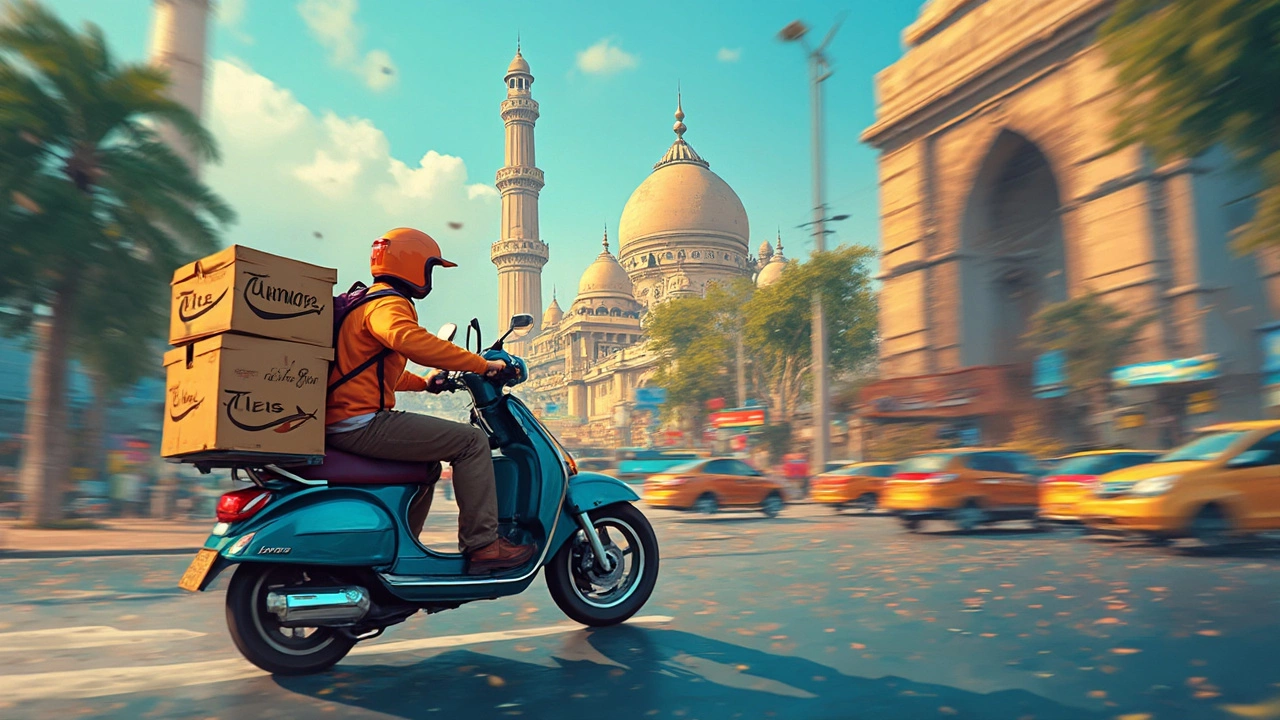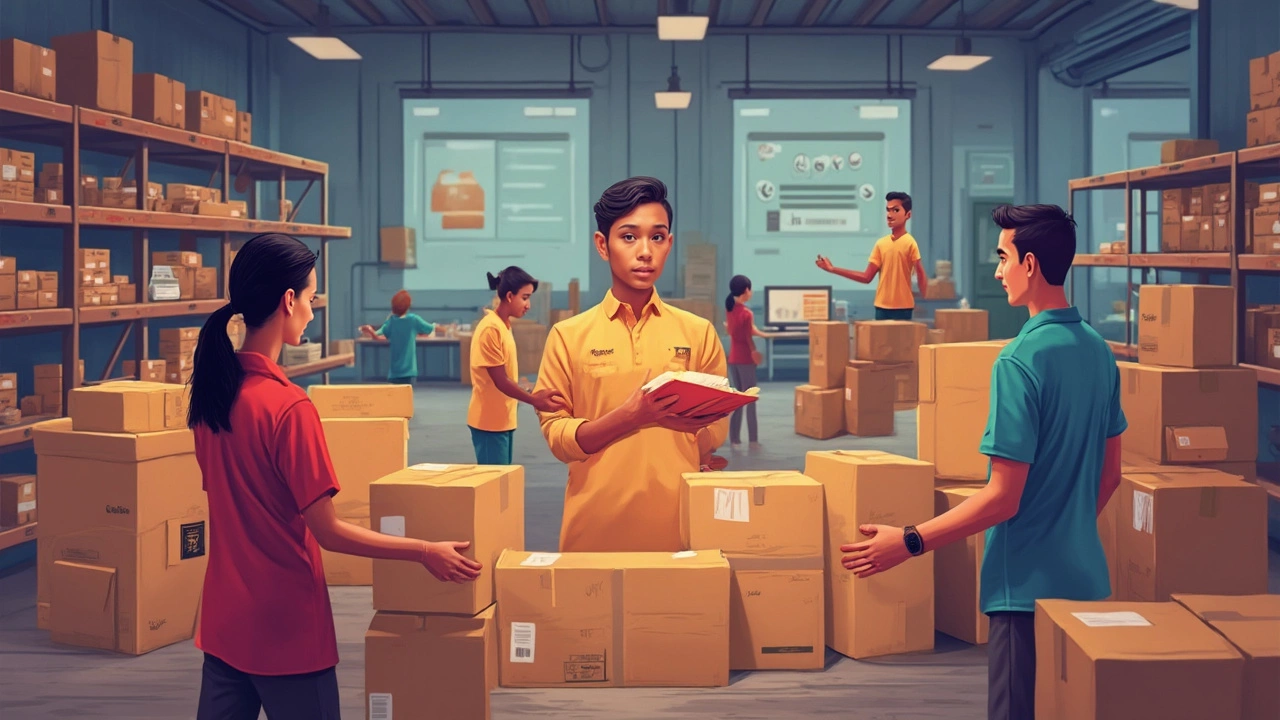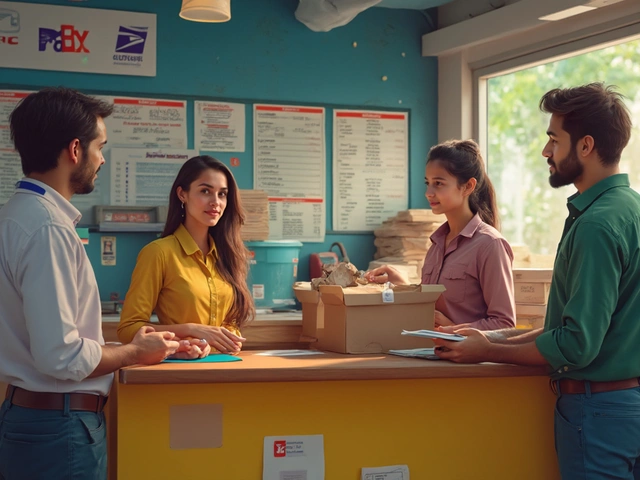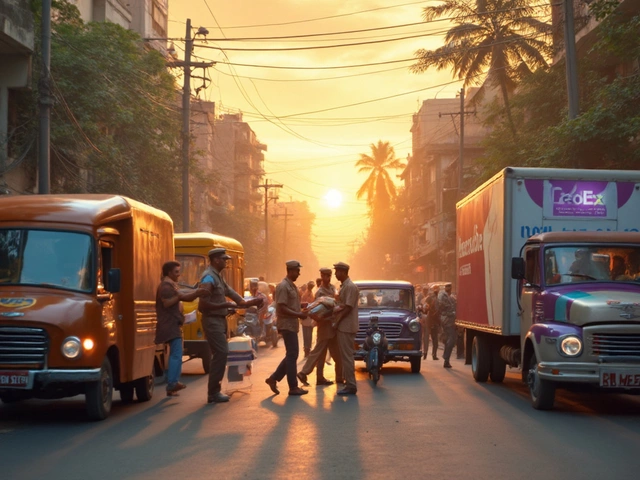Care to know what happens after you click that tempting “buy now” button? It’s almost magical how a few taps on your phone turn into a box waiting by your door. The truth is, that magic is just logistics and sweat, and the e-commerce shipping process hides a surprisingly complex system most of us never see. Last week, my son Everett ordered a toy robot online. Of course, he wanted to know if the robot had to ride a plane or if a van dropped it off. That innocent question led me down a rabbit hole of shipping details. Ever wondered what actually happens between checkout and that knock on your door? Buckle up. The journey is a wild ride of sorting machines, barcodes, weather delays, and human muscle.
What Happens After You Hit “Order”?
Once an order goes through, the real work begins. Your online store immediately records your payment and your item zips onto a digital picking list. Behind the scenes, warehouses (also called distribution centers) spring into action. Think vast spaces: some Amazon fulfillment centers have over 800,000 square feet, with enough conveyor belts to circle a football stadium. Every package is tracked with scannable barcodes. For most big retailers, robots help humans pick items from shelves; Amazon’s Kiva robots move shelves across the floor so workers grab the right box without miles of walking each shift. Smaller stores may handle a few dozen orders by hand, but big players can ship out 300+ packages a minute during holiday rushes. The system begins with order confirmation, inventory check, picking, and then packing. What’s wild? Walmart’s Greenwood fulfillment center processes up to 1.5 million orders a week.
After products get picked and organized, they move to the packing station. Items are wrapped with protective materials—think bubble wrap, recycled air pillows, or shredded cardboard. A shipping label, stamped with your address and a tracking number, seals the deal. Now the shipment’s journey leaves the warehouse, headed for one of many carriers.
Carrier Handoffs and Delivery Networks
Here’s where the shipping magic shifts into high gear. Carriers take your box on a cross-country adventure. Companies like UPS, FedEx, DHL, and the local post office grab pallets packed with orders, all sorted by destination. Up-to-date tracking is possible because of barcode scans at every step: leaving the warehouse, arriving at distribution hubs, sorting in regional centers, out for delivery, and ultimately, landing at your home. Some stores use multiple carriers to speed up rural or international deliveries. Europe might see your package moved by DPD or Hermes, while the US relies heavily on USPS, UPS, and FedEx.
Shipping speed options add another layer. Two-day delivery is now the norm for e-commerce giants. Ever tried Amazon Prime? That famous blue van network relies on ultra-optimized last-mile logistics: dedicated drivers, custom tech, and precise routing. Meanwhile, standard shipping could mean everything from ground trucking to air freight, depending on distance. You can almost picture Everett’s toy robot zooming down conveyor belts, then onto trucks braving highways, next catching a flight in a cargo hold, before stopping at a regional depot closer to home. All shipments eventually hit the local last mile—the toughest and often most expensive part since it’s usually just one van and one package.
Package Tracking and Delivery Experience
Once your order’s out the warehouse door, the tracking number is your best friend. Every scan adds a new log to its journey—sometimes dozens of updates for a single shipment. Shoppers today expect real-time tracking. Google data shows 96% of US shoppers want to know the exact status of a shipped order. Many carriers have even added GPS-powered ‘where’s my package?’ maps on delivery day so you can follow the driver on your phone.
Delivery expectations now include time windows and photo proof. UPS and Amazon both snap photos at the doorstep, just in case your neighbor’s dog gets curious. Missed deliveries usually become a game of “where did it go?” Porch pirates? Yeah, unfortunately, they’re real. Over 210 million packages got snatched off US porches in 2023, so signature options and smart lockboxes have become popular add-ons. Some neighborhoods even coordinate with local delivery hubs to reduce theft and improve timing.
Shipping Costs, Speed, and Options
The hidden side of e-commerce shipping is how every step, from box size to van fuel, affects cost. Did you notice checkout offers for “free shipping” with a minimum order? Retailers build these expenses into product prices or require bigger baskets to offset costs. According to Shippo’s 2024 data, the average cost to ship a standard 2-pound package in the US is about $7, but that can double for cross-country or express service.
Want it faster? Express options like overnight shipping—used by last-minute gifters everywhere—can cost triple. International shipping brings customs forms and duties into the mix, as each country has different import rules. One interesting tip: most delays in international shipping come from incomplete documents or underdeclared values, so always double check if you’re sending gifts overseas. Volume shippers (think: online retailers doing thousands of orders daily) get steep discounts from carriers, which trickle down as lower or even free shipping offers for customers. Dropshipping adds another twist. Here, the store never touches your product; the manufacturer ships it directly, often from China or elsewhere in Asia, leading to longer transit times but cheaper fulfillment.
| Shipping Option | Average Delivery Time | Typical Cost |
|---|---|---|
| Standard Ground | 3–7 days | $7–$10 |
| Two-Day | 2 days | $10–$20 |
| Overnight | 1 day | $20–$40 |
| International (Standard) | 7–21 days | $20–$60+ |

How to Make E-commerce Shipping Work Better for You
If you’re shopping online, knowing what happens behind the curtain helps you shop smarter. Here’s a handful of quick tips based on real-life headaches and industry quirks:
- Check shipping cut-off times. Many stores only process orders during working hours, so a midnight order might ship the next day.
- Look for shipping calculators at checkout. These predict total costs and estimate delivery dates—huge for birthdays, holidays, or last-minute events.
- Track your order, but remember peak seasons (think December) can stretch every timeline. Carriers handle up to double their normal volume around Black Friday and Christmas.
- Consider shipping insurance for expensive orders. If something gets lost, this offers speedy refunds or replacements.
- Pay attention to packaging. Sustainable stores now use compostable mailers or recycled boxes, which is better for the planet and your conscience.
- Double check delivery addresses—autofill mistakes are a classic cause for lost shipments.
- Watch for porch piracy in high-theft areas. Use secure lockers if available, or ask neighbors to grab your package for you.
If you run a small online store, shipping is your make-or-break moment. Invest in reliable order management systems and partner with multiple carriers to avoid disaster if one has delays. Offer a mix of speeds and prices so customers can pay more if they need faster delivery. And be transparent: post accurate cut-off times and expected delivery windows on your site.
At the end of the day, e-commerce shipping is the shady wizard hiding behind the curtain, turning digital click into tangible box. Whether you’re eagerly waiting for a birthday gift or managing a side hustle that ships handmade coffee mugs across the country, understanding this process helps you set better expectations and avoid surprises. Every time Everett asks, “When will my robot get here?” I peek at that tracking link and know it’s not so simple as ‘shipping’—it’s a dance of tech, trucks, people, and a dose of luck. Next time you order, you’ll know what’s happening every step of the way.





